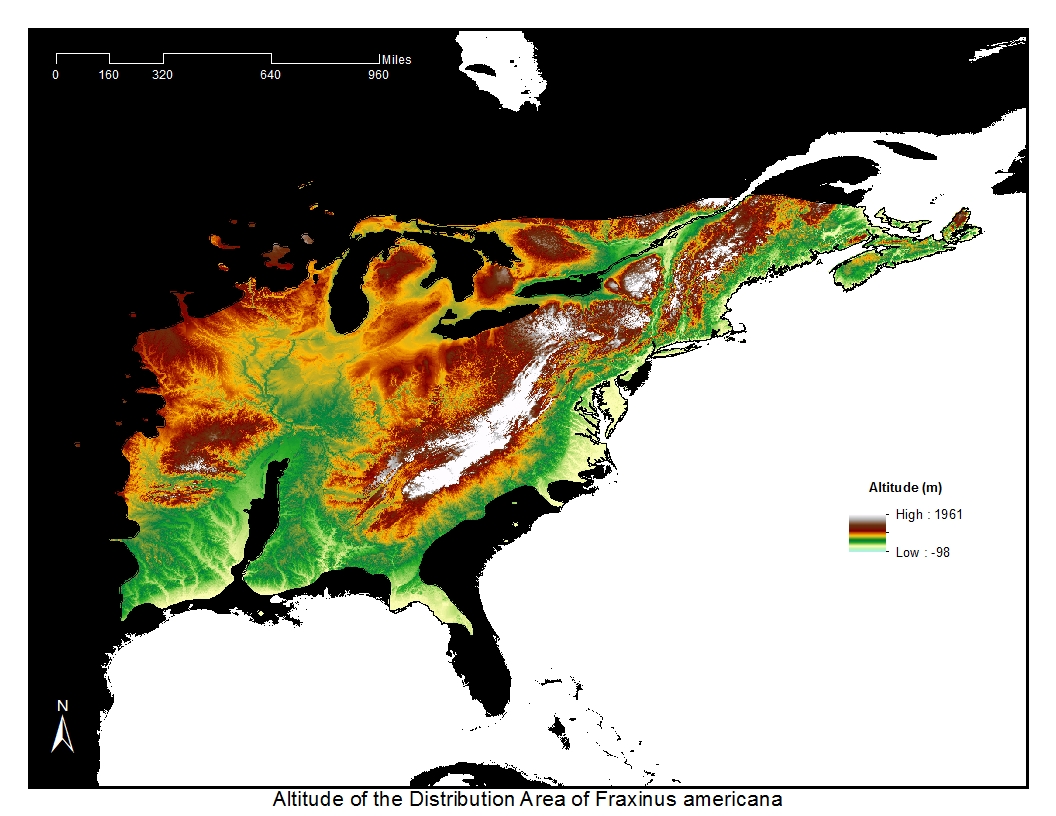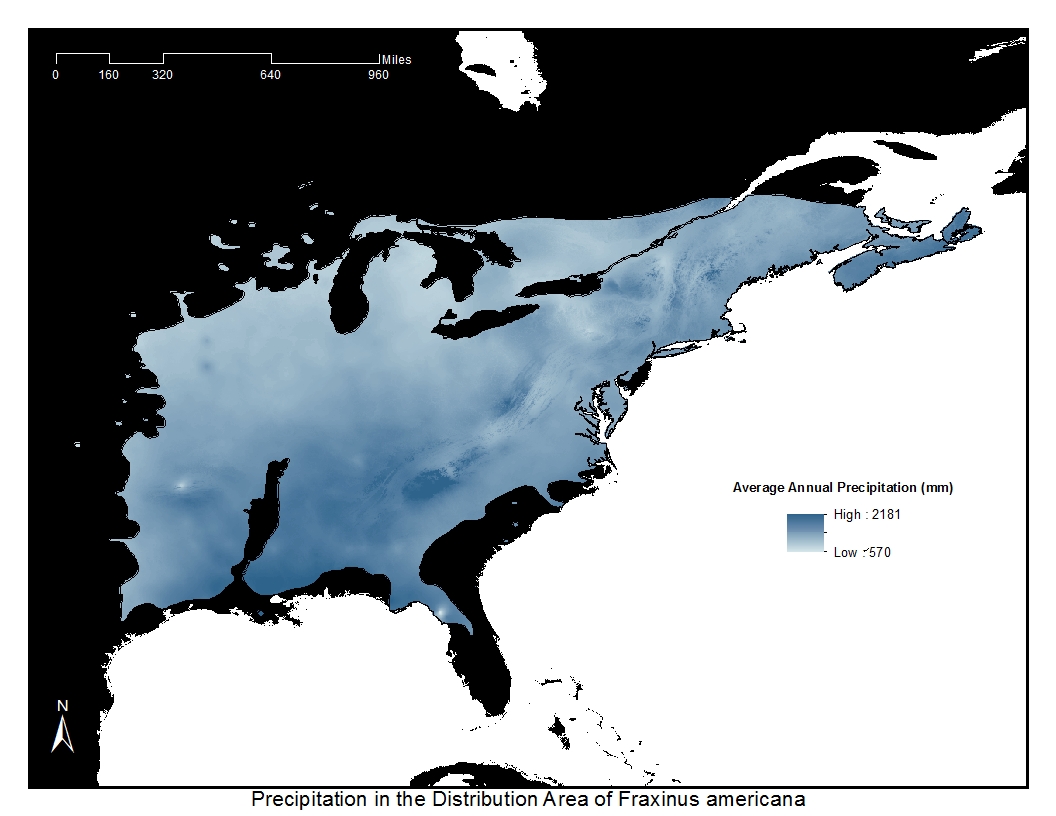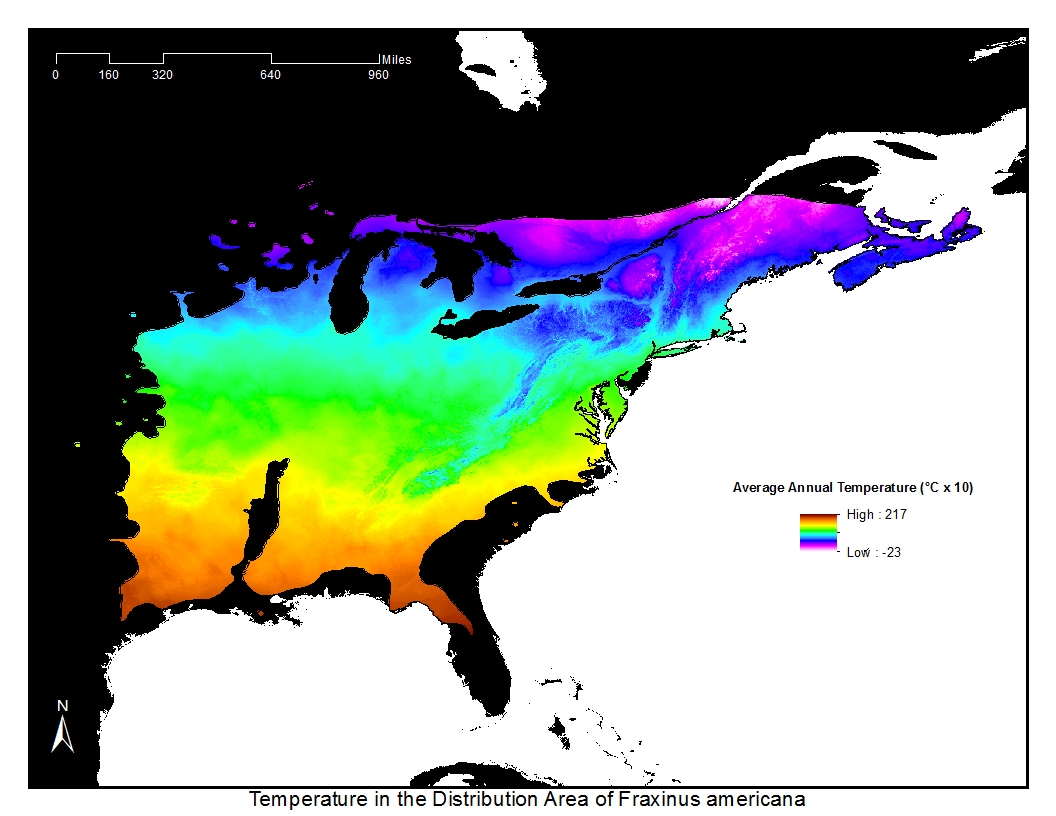White ash, Fraxinus americana, is also known as Biltmore ash and Biltmore white ash. It is likely the most commonly cultivated ash in the United States, though is not dominant in nature. It is, however, a pioneer species that is capable of establishing itself early on abandoned fields.
White ash is considered a medium sized tree. It can take 3 to 15 years to reach 5 feet of height. White ash has been known to reach at least 80 to 90 feet with 15 to 20 inches in trunk diameter. White ash is capable of surviving at various elevations. It is frequently found on slopes.
The distribution is wide enough to allow the climate to vary greatly. White ash grows best on moist, well-drained soils. Moisture is important. Flooding, however, is only intermediately tolerated. It also requires good soil fertility, though this is offered by numerous soil types. The best soils have abundant nitrogen and calcium. Sulfur is also desirable.
The first flowering occurs when the trunk diameter is 3 to 4 inches wide, but becomes more abundant once the trunk reaches 8 to 10 inches. The tree is dioecious, meaning there are separate male and female trees. The flowers tend to appear in April or May, either before or simultaneously with the leaves. Most fruits contain one seed each, and the trees bear seeds beginning at 20 years old. While the seeds are considered mature between September to December, they are not capable of germinating until they have been buried in moist soil for 2 or 3 months. A good seed crop is produced every three years.
White ash is shade tolerant when young, though less tolerant as it grows older. Ash dieback is a severe issue for the white ash, with the disease causing death and weakness. White ash is very sensitive to air pollution, specifically ozone and sulfur dioxide. Other diseases and insects are also harmful to white ash.
White ash was used as a snake bite preventive, effectively or not. Squirrels and birds also feed upon the seeds.




